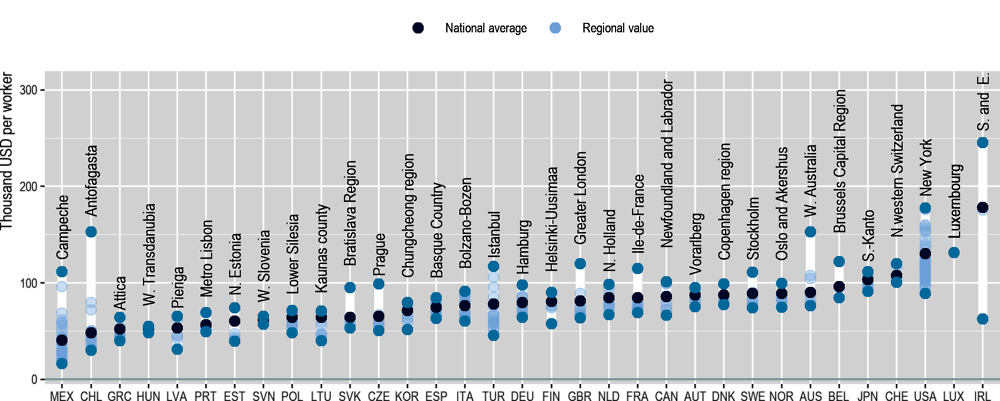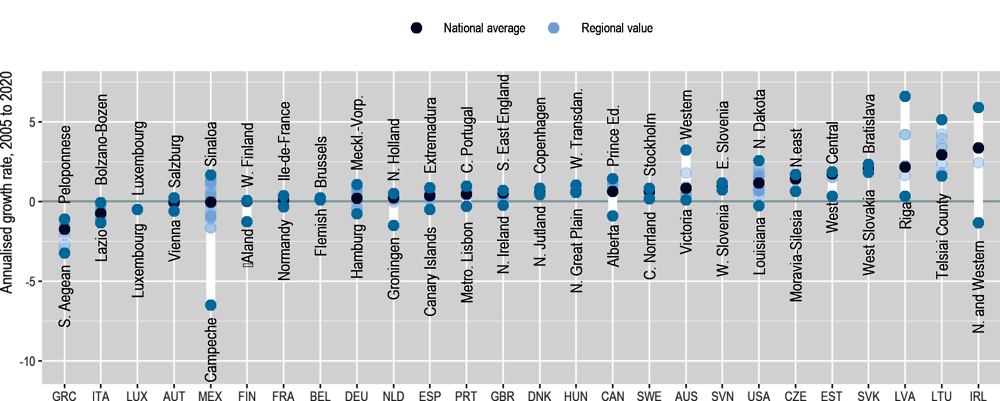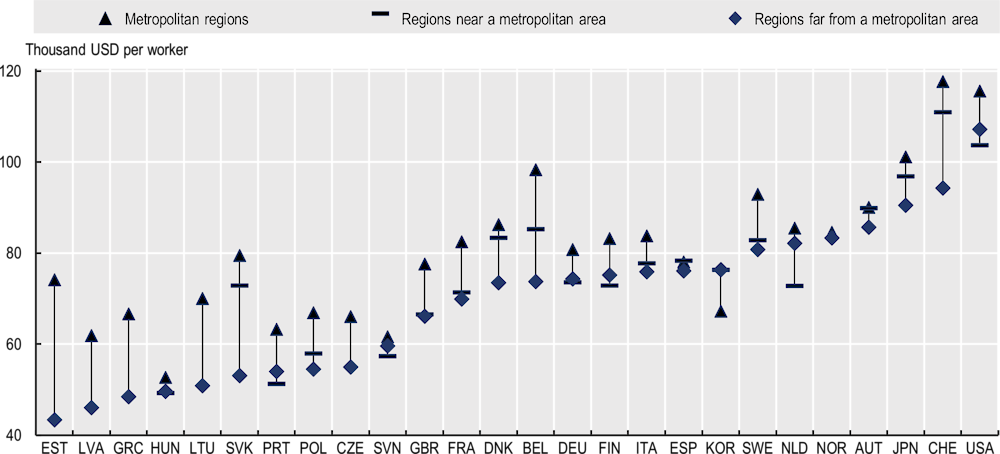Labour productivity differences remain stark across regions. On average, productivity in the top region is nearly double that of the least-productive region. Despite positive growth in the majority of regions, half of OECD countries had at least one region with negative productivity growth over the 2005-20 period.
Productivity is a key contributor to economic growth and well-being. Labour productivity in OECD regions differs substantially both between and within countries (Figure 1.11). On average, within countries, labour productivity in the most productive region is nearly double the productivity of the least productive region. Differences are especially stark in Chile and Mexico: in these countries, the most productive region is more than five times as productive as the least productive region. Overall, around 60% of workers across OECD countries live in a region with productivity levels below the national average.
While productivity rankings within countries do not change frequently, some were affected by the pandemic-related economic disruptions in 2020. Within Italy, Calabria had the lowest productivity level in 2019 but its decline in 2020 was smaller than that of Apulia, which became the lowest-ranked region within Italy that year. Similarly, the Canary Islands fell below Murcia, Spain, due to the pandemic and Tasmania (previously second from the bottom in Australia) swapped places with the state of South Australia for 2019‑20. Only one country experienced a change in its top-ranked region: within Canada, Alberta moved down from the top position to third in terms of productivity levels in 2020 due to its disproportionately large drop in GDP. These short-term productivity fluctuations may reverse but longer-term changes are likely. On the one hand, the dramatic rise of remote working has the potential to increase productivity substantially, while on the other hand, labour market disruptions from the pandemic and multiple years of reduced mobility within and across national borders may have enduring negative consequences for productivity.
Concerning productivity growth over the last 15 years, more than half of OECD countries had at least 1 region with negative productivity growth from 2005-20 (15 out of 26 countries with regional data), while Greece and Italy had negative productivity growth in all regions (Figure 1.12). In half of OECD countries, the capital region had the highest labour productivity in 2020. Despite the outperformance of many capital regions in terms of productivity levels, in most countries, the highest rate of productivity growth was in a non-capital region.
On average, the productivity of regions far from cities continues to lag behind that of metropolitan regions, except in Korea. In the remaining 25 OECD countries, Belgium, Estonia and the Slovak Republic have the largest disparities between metropolitan regions and those regions far from cities, while Norway, Slovenia and Spain have the smallest disparities (Figure 1.13).



